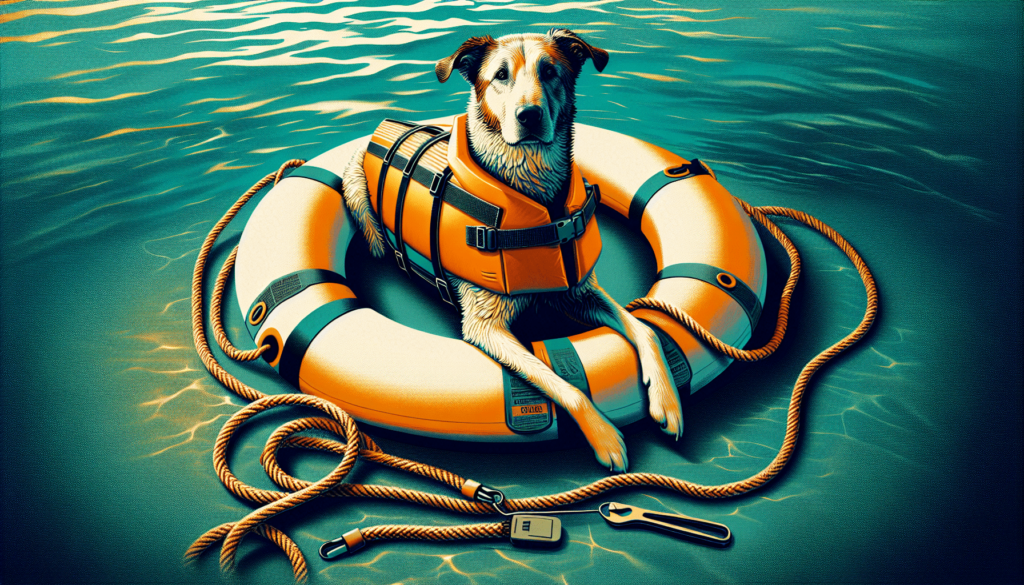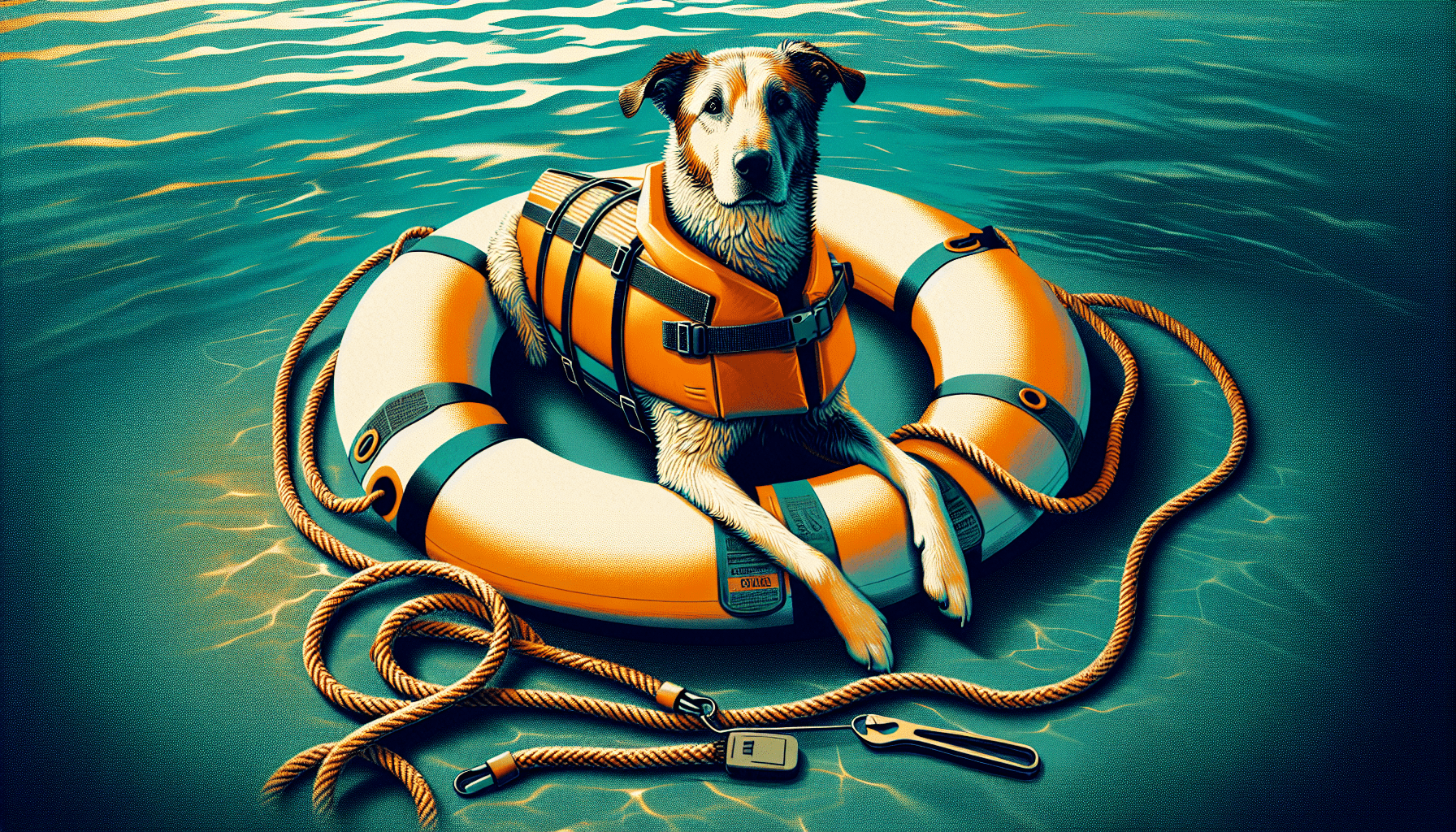Imagine a sunny day at the beach, the perfect setting for some fun in the water with your furry best friend. But before you jump headfirst into those waves, it’s important to ensure your dog’s safety around water. From oceans to pools, there are a few simple precautions you can take to protect your canine companion. In this article, we’ll explore some practical tips and strategies that will help keep your beloved dog safe and secure whenever they’re near water. With these guidelines, you’ll be able to enjoy those precious moments in the water without any worries.

Choose Safe Water Environments
When planning to take your dog near water, it is important to research the area beforehand. Some bodies of water may have strong currents or rough waters that can be dangerous for your furry friend. Look for calm and shallow areas where your dog can safely wade or swim. Additionally, consider visiting designated dog-friendly beaches or lakes where you can be assured that the environment is suitable for your canine companion. Lastly, always take into account the water temperature and weather conditions. If it’s too cold or if there is inclement weather, it may not be the best time to take your dog for a swim.
Provide Adequate Supervision
One of the most important aspects of keeping your dog safe around water is to never leave them unattended. Even if your dog is a strong swimmer, accidents can happen in the blink of an eye. Always keep a close eye on your dog’s behavior while they are in the water. Look out for signs of distress, exhaustion, or panic. It is also crucial to train your dog to respond to commands, such as “come” or “stay,” so that you can easily guide them away from dangerous situations. Using a leash or harness can provide an added level of control and prevent them from venturing too far into deep water.
Teach Basic Water Safety Skills
Before venturing into deeper waters, it is important to introduce your dog to water gradually. Start by allowing them to explore shallow areas, such as a calm tide pool or a shallow lake. You can gradually increase the depth as your dog becomes more comfortable. Teach them how to enter and exit the water safely, ensuring they understand where it is safe to step and how to navigate slippery surfaces. It’s also helpful to train your dog to swim and paddle efficiently. Not all dogs are natural swimmers, so providing them with the skills to stay afloat and move through the water can greatly enhance their safety in aquatic environments. Lastly, encourage your dog to stay calm in the water. Excessive splashing or hyperactive behavior can lead to accidents and may put your dog at risk.
Invest in Appropriate Safety Gear
To provide an extra layer of protection, invest in suitable safety gear for your dog. A well-fitted canine life jacket can be invaluable, especially for dogs who are not strong swimmers or who may tire easily in the water. Ensure that the life jacket does not impede your dog’s movement or ability to swim comfortably. Consider using a buoyant toy or flotation device that your dog can hold onto or fetch, especially if they are in deep water. Additionally, using a long leash can provide added safety, allowing you to quickly guide your dog back to shore or prevent them from straying too far.

Be Mindful of Water Contaminants
Water contamination can pose serious health risks to your dog. Avoid swimming in areas with visible algae blooms, as they may contain toxins that can be harmful if ingested or even just from skin contact. Check the water quality and cleanliness of the area before allowing your dog to swim. Municipal water testing reports or online resources can provide information on the safety of specific water bodies. After swimming, it is important to rinse your dog thoroughly to remove any potential contaminants from their fur.
Prevent Ingestion of Excessive Water
While it may be tempting for your dog to drink pool or saltwater, it is important to discourage them from doing so. Both pool chemicals and the high salt content in seawater can be harmful to your dog’s digestive system. Keep an eye on your dog and redirect their attention if they show interest in drinking water that is unsafe. Additionally, be vigilant for signs of water intoxication, which can occur if your dog ingests excessive amounts of water during playtime or while swimming. Symptoms of water intoxication include excessive drooling, vomiting, lethargy, and in severe cases, loss of coordination. Offer your dog fresh water and regular breaks during play to avoid any potential health issues.
Avoid Hazardous Substances in Water
When your dog is near water, it is crucial to be cautious of potential hazardous substances. Chemicals such as chlorine or other disinfectants in pools and spas can irritate your dog’s skin and eyes, and can even be toxic if ingested. Prevent your dog from drinking water from unknown sources, especially if there is a possibility of contamination. Additionally, steer clear of areas where there may be potential toxins present, such as industrial sites or areas with heavy pollution. Being aware of potential hazards can help ensure your dog’s safety while enjoying water activities.
Educate Yourself on Pet CPR and First Aid
Having knowledge of pet CPR and first aid can be the difference between life and death in an emergency situation. Take the time to learn how to perform CPR on dogs and familiarize yourself with the signs of drowning and heatstroke. Additionally, it is advisable to carry a pet-friendly first aid kit with you when you are near water. The kit should include basic supplies such as bandages, antiseptic ointment, gauze pads, and tweezers. Consult with your veterinarian for guidance on how to handle specific emergencies and to receive recommendations on what should be included in your first aid kit.
Consider Your Dog’s Swimming Abilities
Not all dogs are natural swimmers, and their swimming abilities can vary based on breed and physical condition. It is important to take these factors into account when introducing your dog to water activities. Some dogs may require a canine life jacket regardless of their swimming ability to ensure their safety. Breeds with short legs or heavy bodies may struggle to stay afloat for extended periods, while others may have difficulty regulating their body temperature in water. Always assess your dog’s swimming abilities and make the necessary adjustments to keep them safe.
Create a Safe Home Environment
Even when you are not near a body of water, it is essential to create a safe home environment for your dog. Secure pools, hot tubs, and other water features to prevent accidental access. Dogs can be curious and may wander into these areas unsupervised, posing a significant risk. Keep toilet lids closed, as dogs may be tempted to drink from them or accidentally fall in. Installing pool alarms or safety covers can add an extra layer of protection, alerting you to any potential danger and preventing unauthorized entry.
By following these guidelines, you can ensure that your dog is safe around water and can enjoy water activities without any unnecessary risks. Remember, your furry friend’s safety is your responsibility, so always prioritize their well-being and take the necessary precautions to keep them safe. Happy and safe swimming to you and your beloved canine companion!

